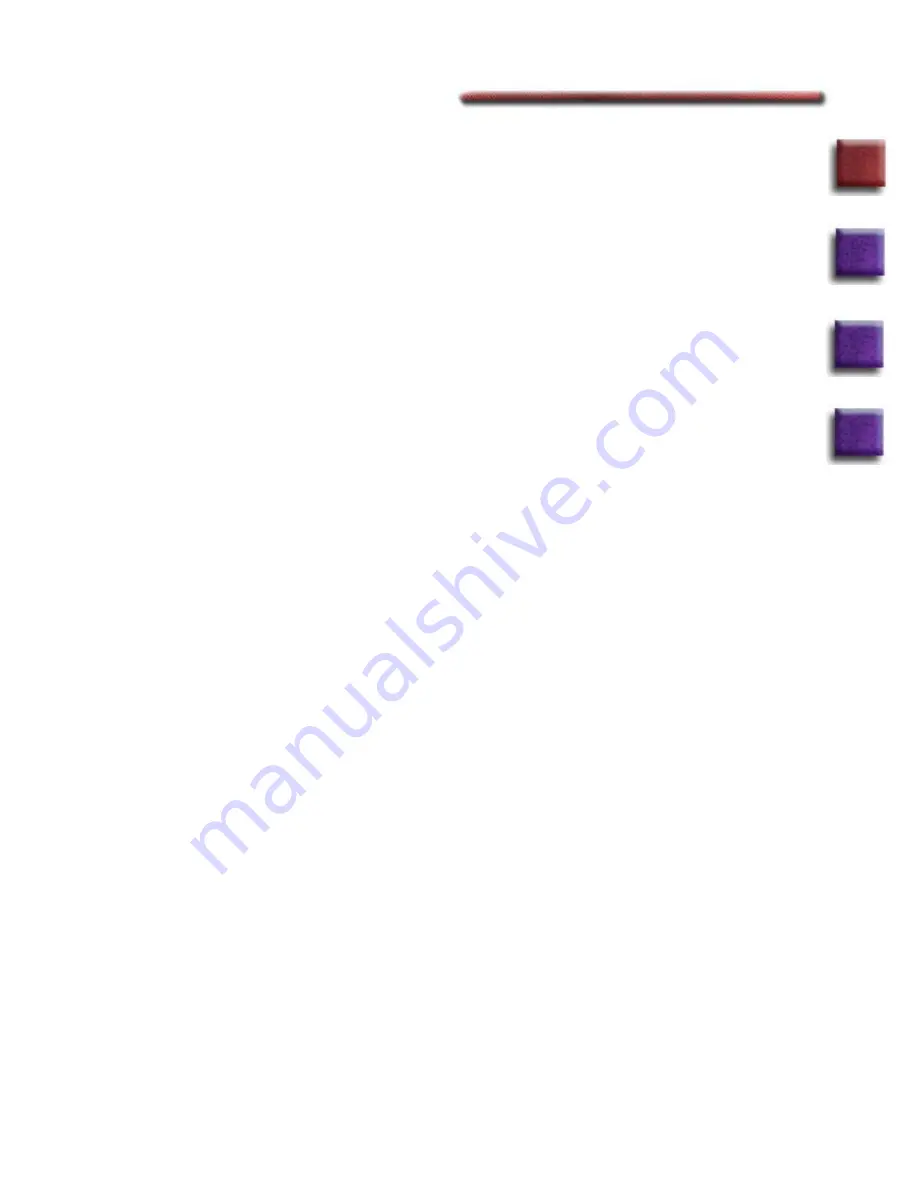
Control Panel Buttons
1-11
1
Start Here
Index
Contents
A keypad buffer appears in the lower right corner of each menu. The buffer can
display one of the following:
n
n
n
n
Empty (default).
n
n
n
n
A number waiting to be assigned to a softknob.
n
n
n
n
A number and the word
Trim
.
n
n
n
n
The word
Align
.
n
n
n
n
The word
Clear
.
n
n
n
n
The
+/-
symbol.
n
n
n
n
The message
<<Set Path>>
and a list of the path types:
JP
(jump),
LN
(linear),
SL
(smooth linear),
T1
(Tension Continuity Bias 1),
T2
(Tension
Continuity Bias 2), and
SM
(smooth). A cursor indicates the currently
selected path type.
The center of the display shows information about the current timeline and
effect. The top line (
CTime
) indicates the current point on the effects timeline
as seconds:frames. The next five lines indicate the current keyframe and total
keyframes for each channel's effect. For example, if channel 1A is on keyframe 2
of a five keyframe effect, the display reads
Ch 1A : Kf 2 of 5
. There are two
Free
Kf
lines. The first one shows the number of keyframes available for addition in
the current effect (there is a maximum of 300 keyframes per effect). The bottom
line shows the number of keyframes available in the system keyframe pool (a
total of over 900 with the standard 1MB memory, 2200 with the optional 2MB
memory).
Below the effect information display area is a single line edit buffer that shows
your keyframe editing command strings (TimeFrame Effects Editor or Quick
Keyframes keystroke sequences). If DVEOUS recognizes the command string,
it confirms by displaying
OK
at the end of the string when you press
ENTER
. If
it does not, an error message appears after the unrecognized command string.
You can “lock” the joystick control to the current menu settings, then change to
a different menu and use the softknobs to control the settings there. The joy-
stick still affects only the settings it is locked to.












































